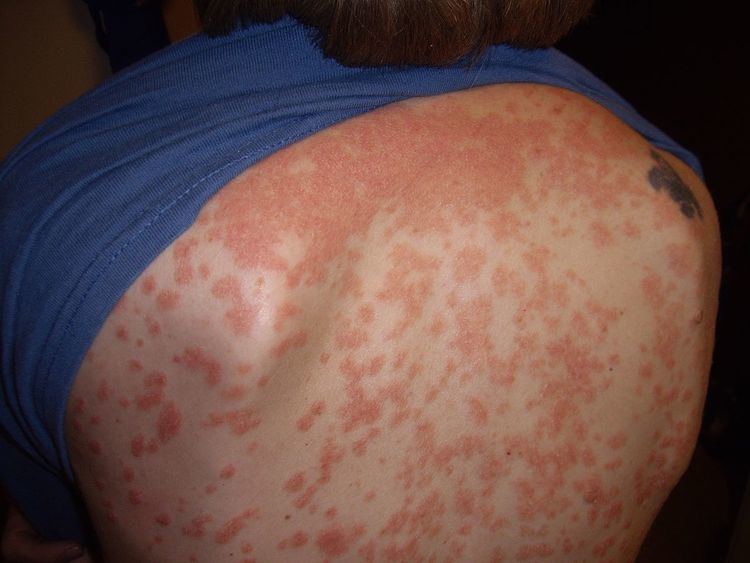Specialty dermatology DiseasesDB 34089 | ICD-10 L40.4 (ILDS L40.400) | |
 | ||
Guttate psoriasis (also known as eruptive psoriasis) is a type of psoriasis that presents as small (0.5–1.5 cm in diameter) lesions over the upper trunk and proximal extremities; it is found frequently in young adults. Guttate psoriasis is classically triggered by a bacterial infection, usually an upper respiratory tract infection.
For some people it starts as a throat infection, or strep throat. After the throat infection has cleared up the person can feel fine for several weeks before noticing the appearance of red spots. They appear small at first, like a dry red spot which is slightly itchy. When scratched or picked the top layer of dry skin is removed, leaving dry, red skin beneath with white, dry areas marking where flakes of dry skin stop and start. In the weeks that follow the spots can grow to as much as an inch in diameter. Some of the larger ones may form a pale area in the center which is slightly yellow. Treatment is often a mild steroid, such as hydrocortisone, but this is not always effective. Other treatment include exposing the affected area of the skin to sunlight (while avoiding sunburn). The condition often but not always clears up on its own. The guttate psoriasis can occur on any part of the body, particularly the legs, arms, torso, eyelids, back, bottom, bikini-line and neck. Generally the parts of the body most affected are seen on the arms, legs, back and torso. Enthusiastic exfoliation can lead to bleeding so care and moisturization are important to keep the affected skin healthy.
Note: It is commonly mistaken for Measles.
